WOMEN AT WORK REVOLUTIONISING THE CONSTRUCTION EQUIPMENT LANDSCAPE
The construction equipment industry, long perceived as a male-dominated domain, is undergoing a transformative shift. From operating heavy machinery to leading innovative projects, women are increasingly carving out space in this vital sector.

The construction equipment industry, long perceived as a male-dominated domain, is undergoing a transformative shift. From operating heavy machinery to leading innovative projects, women are increasingly carving out space in this vital sector. Globally, and particularly in countries like India, initiatives aimed at empowering women in the construction equipment industry are gaining momentum. These efforts are not only addressing gender disparities but also unlocking untapped potential to meet the industry’s growing demands. This cover story explores the strides being made, spotlighting key programs, challenges, and perspectives from India and abroad.
Across the world, the construction sector contributes significantly to economic growth, yet women remain underrepresented, constituting less than 11% of the workforce in many regions, according to the International Labour Organization (ILO). In the equipment-specific segment—encompassing operators, technicians, and engineers—the numbers are even lower. Recognizing this gap, governments, industry leaders, and organizations have launched targeted initiatives to empower women and diversify the talent pool.
In the United States, organizations like the National Association of Women in Construction (NAWIC) have been pivotal. Founded in 1953, NAWIC provides mentorship, training, and networking opportunities to women pursuing careers in construction-related fields, including equipment operation and maintenance. Their “Women in Construction Week” celebrates female contributions and inspires the next generation. Similarly, the Occupational Safety and Health Administration (OSHA) partners with trade groups to offer safety training tailored for women, addressing barriers like ill-fitting personal protective equipment (PPE)—a practical yet often overlooked hurdle.
In the United Kingdom, the Construction Industry Training Board (CITB) has rolled out the “Be Fair Framework,” encouraging companies to adopt inclusive hiring practices. Programs like “Women into Construction” provide hands-on experience with heavy machinery, such as excavators and bulldozers, breaking the stereotype that these roles are exclusively male. Companies like JCB, a global leader in construction equipment manufacturing, have also pledged to increase female representation in their global workforce, offering apprenticeships and leadership tracks for women.
Australia’s “Women in Trades” initiative, backed by government funding, targets young women entering vocational training for equipment-related roles. By partnering with manufacturers like Caterpillar and Komatsu, the program ensures participants gain certifications and real-world experience, bridging the skills gap in a sector facing labour shortages.
India’s Emerging Landscape
In India, the construction equipment industry is booming, driven by ambitious infrastructure projects like the Bharatmala Pariyojana and Smart Cities Mission. Valued at over $6 billion in 2023, according to the Indian Construction Equipment Manufacturers’ Association (ICEMA), the sector is poised for growth. Yet, women’s participation remains minimal, with cultural norms, safety concerns, and lack of training often cited as barriers.
However, change is afoot. The Indian government’s Skill India Mission, launched in 2015, has been a game-changer. Through its vocational training arm, the National Skill Development Corporation (NSDC), women are being upskilled in operating construction equipment like cranes, loaders, and compactors. In 2022, NSDC partnered with Tata Hitachi, a leading equipment manufacturer, to train 500 women as operators in rural areas. These women, many from various communities, are now employed on projects ranging from road construction to urban redevelopment.
Another notable initiative is the “Saksham” program by Mahindra Construction Equipment. Launched in 2021, Saksham empowers women through technical training and soft skills development, preparing them for roles as technicians and site supervisors. Mahindra reports that over 300 women have graduated from the program, with several securing jobs at dealerships and project sites across India.
Nonprofits are also stepping up. The Self-Employed Women’s Association (SEWA) in Gujarat has introduced a construction skills module that includes equipment operation. Targeting women from informal sectors, SEWA provides microfinance support alongside training, enabling participants to purchase tools or start small contracting businesses. In 2024, SEWA celebrated its first cohort of female crane operators, a milestone in a state known for its industrial growth.
Challenges and Opportunities
Despite progress, challenges persist. Globally, workplace safety remains a concern, with women reporting higher rates of harassment in male-dominated environments. In India, rural women face additional hurdles, including limited access to training centers and societal pressure to prioritize family over career. Equipment design also lags—machines and tools are often built for male physiques, making them harder for women to operate efficiently.
Yet, these challenges present opportunities. Manufacturers are beginning to address ergonomics, with companies exploring adjustable controls and lighter materials. Technology, too, is leveling the playing field. Remote-operated equipment and simulators allow women to train and work without the physical demands of traditional roles, a trend gaining traction in both India and abroad.
Sustainability is another driver. As the industry shifts toward greener practices, women are finding niches in areas like electric equipment maintenance and data-driven project management.
Corporate Commitment and Policy Support
Corporate giants are stepping up. Caterpillar’s “Women in Leadership” program aims to increase female representation in technical and executive roles by 30% by 2030. In India, JCB India had launched “JCB Empower,” offering scholarships to female engineering students specializing in equipment design. These efforts align with broader ESG (Environmental, Social, Governance) goals, where diversity is a key metric.
Policy support is critical. The European Union’s Gender Equality Strategy 2020-2025 incentivizes construction firms to hire more women through tax breaks and grants. In India, the Ministry of Labour and Employment is piloting a scheme to subsidize PPE designed for women, addressing a practical barrier to entry.
The Road Ahead
Empowering women in the construction equipment industry is not just a matter of equity—it’s a business imperative. With global demand for skilled workers outpacing supply, women represent a vital resource. The World Economic Forum estimates that closing gender gaps in STEM-related fields, including construction, could add $12 trillion to the global economy by 2030.
From India’s rural training camps to the high-tech hubs of Europe, initiatives are proving that women can thrive in this industry.
For the construction equipment sector, the message is clear: empowering women isn’t a sideline effort—it’s the foundation of progress. As we look to 2025 and beyond, the roar of machinery will increasingly echo with the voices of women breaking ground, both literally and figuratively.
Voices From The Industry Leaders
 Shantanu Roy, CMD, BEML, said, “The Pink Line at our Palakkad facility reflects our unwavering commitment to innovation and inclusivity in defence manufacturing. This all-women assembly line, driven by precision, agility, and expertise, has set new benchmarks in efficiency and excellence. Encouraged by its success, we aim to establish similar advanced Pink Lines at our Mysuru, Bangalore, and KGF plants. As part of our broader vision, we are actively working towards increasing workforce diversity to 25% in the next 2-3 years, recognizing that inclusivity is not just an advantage but a catalyst for sustainable growth and organizational excellence.”
Shantanu Roy, CMD, BEML, said, “The Pink Line at our Palakkad facility reflects our unwavering commitment to innovation and inclusivity in defence manufacturing. This all-women assembly line, driven by precision, agility, and expertise, has set new benchmarks in efficiency and excellence. Encouraged by its success, we aim to establish similar advanced Pink Lines at our Mysuru, Bangalore, and KGF plants. As part of our broader vision, we are actively working towards increasing workforce diversity to 25% in the next 2-3 years, recognizing that inclusivity is not just an advantage but a catalyst for sustainable growth and organizational excellence.”
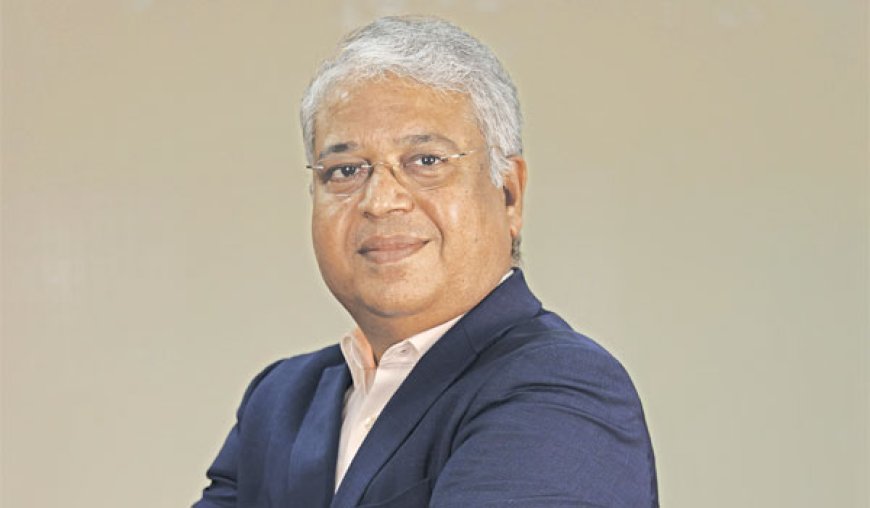 V.G. Sakthikumar, Chairman & Managing Director, Schwing Stetter India, said, “The construction equipment industry is undergoing a significant transformation, and women are at the forefront of this change. While traditionally considered a male-dominated sector, advancements in technology, automation, and ergonomic machine designs are breaking down barriers, enabling more women to take on roles in operations, engineering, manufacturing, and leadership. At SCHWING Stetter India, we have actively embraced this change, not just by employing women but by empowering them with training, career development programs, and leadership opportunities. With the right infrastructure and policies in place, we envision a future where women play an integral role in shaping the industry’s growth and innovation.”
V.G. Sakthikumar, Chairman & Managing Director, Schwing Stetter India, said, “The construction equipment industry is undergoing a significant transformation, and women are at the forefront of this change. While traditionally considered a male-dominated sector, advancements in technology, automation, and ergonomic machine designs are breaking down barriers, enabling more women to take on roles in operations, engineering, manufacturing, and leadership. At SCHWING Stetter India, we have actively embraced this change, not just by employing women but by empowering them with training, career development programs, and leadership opportunities. With the right infrastructure and policies in place, we envision a future where women play an integral role in shaping the industry’s growth and innovation.”
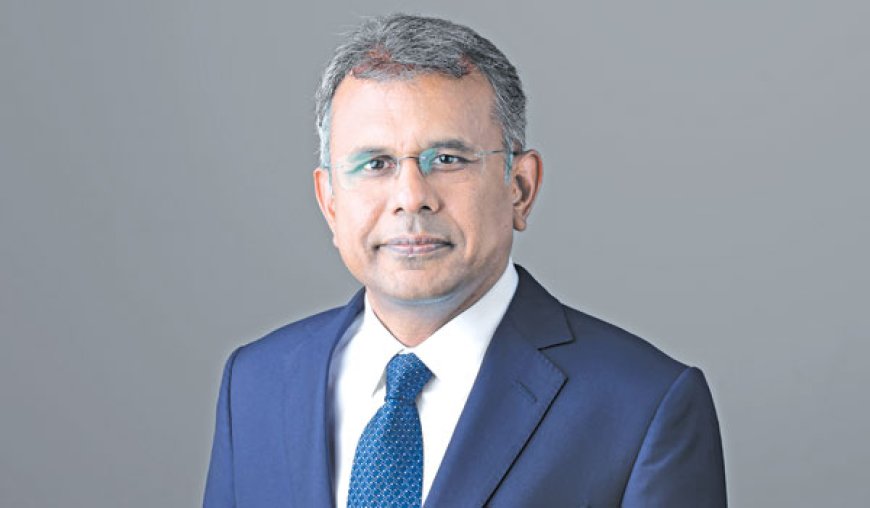 V. Senthilkumar, Managing Director, Propel Industries, said, “The role of women in the construction equipment industry is undergoing a significant transformation. Traditionally a male-dominated sector, it is now witnessing greater female participation across various functions, including engineering, manufacturing, operations, sales, and leadership roles. Technological advancements, such as automation and digitalization, have reduced the dependency on physically intensive labour, making it easier for women to take on roles that were once considered unsuitable for them. At Propel Industries, we recognize this shift and actively support the inclusion of women in our workforce. We believe that diversity in thought and skill enhances innovation, productivity, and overall business success. As more women enter the field, their contributions are helping redefine industry standards and create a more balanced and inclusive work environment.”
V. Senthilkumar, Managing Director, Propel Industries, said, “The role of women in the construction equipment industry is undergoing a significant transformation. Traditionally a male-dominated sector, it is now witnessing greater female participation across various functions, including engineering, manufacturing, operations, sales, and leadership roles. Technological advancements, such as automation and digitalization, have reduced the dependency on physically intensive labour, making it easier for women to take on roles that were once considered unsuitable for them. At Propel Industries, we recognize this shift and actively support the inclusion of women in our workforce. We believe that diversity in thought and skill enhances innovation, productivity, and overall business success. As more women enter the field, their contributions are helping redefine industry standards and create a more balanced and inclusive work environment.”
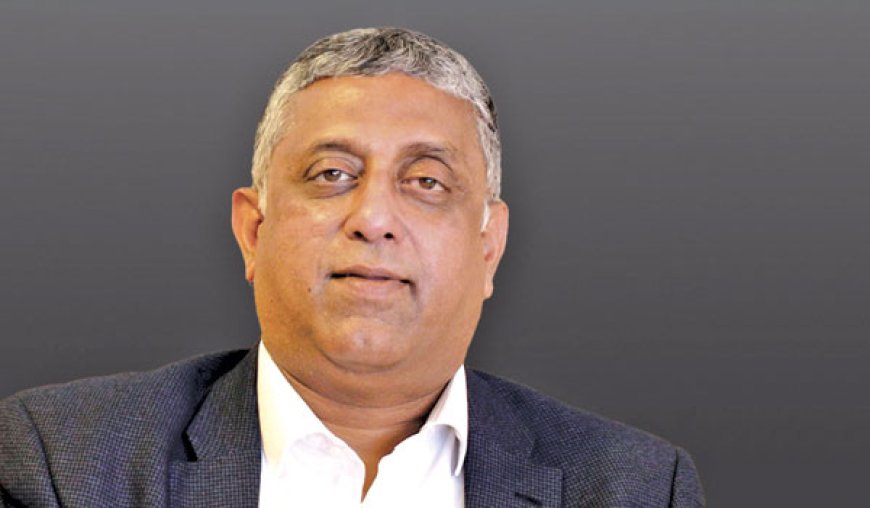 Amarnath Ramachandran, Managing Director, ARX Mining & Construction Equipment, said, “In the past, work on remote sites where housing quarters and sanitation facilities were limited, companies preferred to retain male employees. Today, site and safety conditions and workplace standards have improved vastly. In Kalimantan, Borneo, there are mines where all the dumper operators are women. According to the supervisor there, they tend to maintain vehicles much better as they drive carefully and were far more disciplined and systematic on maintenance procedures. Today, as we are looking to double coal production, increase road networks, the requirement and potential to work in the construction and mining sites in stores, service, operator and managerial roles has a huge potential.”
Amarnath Ramachandran, Managing Director, ARX Mining & Construction Equipment, said, “In the past, work on remote sites where housing quarters and sanitation facilities were limited, companies preferred to retain male employees. Today, site and safety conditions and workplace standards have improved vastly. In Kalimantan, Borneo, there are mines where all the dumper operators are women. According to the supervisor there, they tend to maintain vehicles much better as they drive carefully and were far more disciplined and systematic on maintenance procedures. Today, as we are looking to double coal production, increase road networks, the requirement and potential to work in the construction and mining sites in stores, service, operator and managerial roles has a huge potential.”
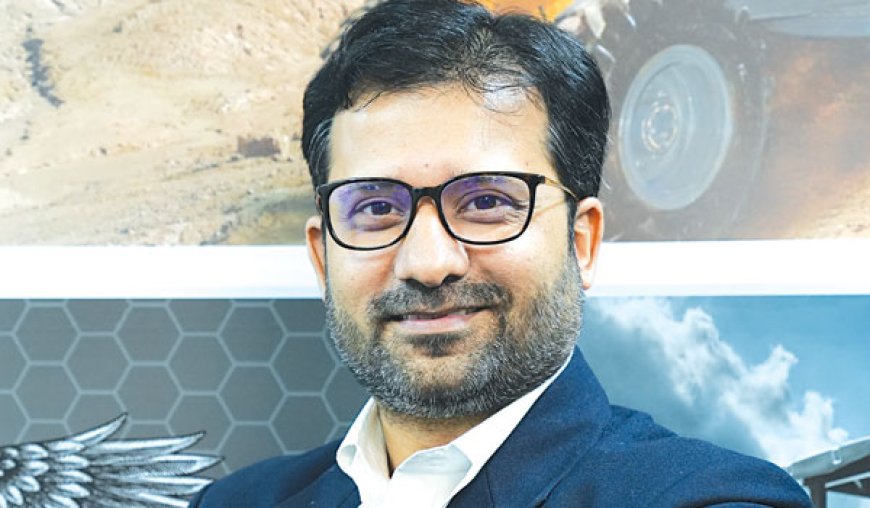 Shalabh Chaturvedi, Managing Director, CASE Construction Equipment – India & SAARC region, said, “The construction equipment industry in India is evolving rapidly, driven by technological advancements and increased demand for efficiency. As the industry grows, the role of women is becoming more prominent, especially in technical and operational fields. This shift not only promotes diversity but also brings fresh perspectives that drive innovation and sustainable growth in the sector. To ensure sustained progress, it is essential to focus on skill development, mentorship, and creating opportunities where women can apply their expertise in real-world scenarios. At CASE, we are proud to contribute to this positive shift through our all-women production line of Skid Steer Loader. This initiative demonstrates that with the right training and support, women can excel in high-precision roles, enhancing both product quality and operational efficiency. While challenges such as societal perceptions and infrastructure gaps remain, consistent efforts can help create a more inclusive and dynamic workforce. As we continue to strengthen our presence in India, we remain committed to encourage an environment where women can play a key role in shaping the industry’s future.”
Shalabh Chaturvedi, Managing Director, CASE Construction Equipment – India & SAARC region, said, “The construction equipment industry in India is evolving rapidly, driven by technological advancements and increased demand for efficiency. As the industry grows, the role of women is becoming more prominent, especially in technical and operational fields. This shift not only promotes diversity but also brings fresh perspectives that drive innovation and sustainable growth in the sector. To ensure sustained progress, it is essential to focus on skill development, mentorship, and creating opportunities where women can apply their expertise in real-world scenarios. At CASE, we are proud to contribute to this positive shift through our all-women production line of Skid Steer Loader. This initiative demonstrates that with the right training and support, women can excel in high-precision roles, enhancing both product quality and operational efficiency. While challenges such as societal perceptions and infrastructure gaps remain, consistent efforts can help create a more inclusive and dynamic workforce. As we continue to strengthen our presence in India, we remain committed to encourage an environment where women can play a key role in shaping the industry’s future.”
 Malar Fernando, Director, Human Resources, Terex India, said, “Women are increasingly stepping into technical and leadership roles in the construction equipment industry. With advancements in technology and automation, opportunities have expanded beyond traditional support roles. At Terex, we are fostering a culture of inclusion by enabling women to grow in areas such as manufacturing, engineering, and operations. By providing training, mentorship, and leadership pathways, we are ensuring that women have the resources to build successful careers. Our commitment to an inclusive workplace has been recognized with the Great Place to Work badge, reflecting our ongoing efforts to create equitable opportunities for all employees.”
Malar Fernando, Director, Human Resources, Terex India, said, “Women are increasingly stepping into technical and leadership roles in the construction equipment industry. With advancements in technology and automation, opportunities have expanded beyond traditional support roles. At Terex, we are fostering a culture of inclusion by enabling women to grow in areas such as manufacturing, engineering, and operations. By providing training, mentorship, and leadership pathways, we are ensuring that women have the resources to build successful careers. Our commitment to an inclusive workplace has been recognized with the Great Place to Work badge, reflecting our ongoing efforts to create equitable opportunities for all employees.”
 Rohit Punjabi, Vice President and Business Head, LiuGong India, said, “Traditionally, the construction and heavy machinery industry has been male-dominated. However, LiuGong India has been at the forefront of changing this narrative by actively promoting women’s participation across various domains, including supply chain, engineering, sales, HR, and finance. Today, women at LiuGong India hold significant positions in technical, commercial, and strategic roles, making valuable contributions to the company’s growth. The organization continually encourages women to take on leadership positions, providing them with the necessary resources and support to excel in their careers. LiuGong India has implemented several policies and initiatives to foster a more inclusive and supportive work environment for women.”
Rohit Punjabi, Vice President and Business Head, LiuGong India, said, “Traditionally, the construction and heavy machinery industry has been male-dominated. However, LiuGong India has been at the forefront of changing this narrative by actively promoting women’s participation across various domains, including supply chain, engineering, sales, HR, and finance. Today, women at LiuGong India hold significant positions in technical, commercial, and strategic roles, making valuable contributions to the company’s growth. The organization continually encourages women to take on leadership positions, providing them with the necessary resources and support to excel in their careers. LiuGong India has implemented several policies and initiatives to foster a more inclusive and supportive work environment for women.”
 Swapnil Gupta, Director - HR, Putzmeister India, said, “The construction equipment industry, like any other, comprises a core operational function—such as manufacturing and production—supported by various critical functions, including finance, human resources, supply chain management, and sales. From a talent acquisition perspective, hiring women in these supporting functions is relatively straightforward, as these roles do not traditionally carry the same physical, technical, or cultural barriers associated with core production processes. However, integrating women into the heart of the industry—particularly in manufacturing, engineering, and field operations—presents a unique set of challenges. However, with the growing number of women pursuing degrees in technical and engineering disciplines has significantly expanded their career opportunities in the construction equipment industry. This shift enables them to seamlessly enter roles in engineering, product design, research and development (R&D), as well as sales and service functions.”
Swapnil Gupta, Director - HR, Putzmeister India, said, “The construction equipment industry, like any other, comprises a core operational function—such as manufacturing and production—supported by various critical functions, including finance, human resources, supply chain management, and sales. From a talent acquisition perspective, hiring women in these supporting functions is relatively straightforward, as these roles do not traditionally carry the same physical, technical, or cultural barriers associated with core production processes. However, integrating women into the heart of the industry—particularly in manufacturing, engineering, and field operations—presents a unique set of challenges. However, with the growing number of women pursuing degrees in technical and engineering disciplines has significantly expanded their career opportunities in the construction equipment industry. This shift enables them to seamlessly enter roles in engineering, product design, research and development (R&D), as well as sales and service functions.”
 Avanthi Rao, Business Leader, Components & Software, Cummins India, said, “The construction equipment industry is witnessing a transformative shift, with women stepping into key roles and redefining traditional norms. From shop floors to leadership positions, their contributions are driving innovation, operational excellence, and a more inclusive work environment. Women are playing a pivotal role in shaping the industry’s future by bringing fresh perspectives, enhancing problem-solving, fostering collaboration, and breaking stereotypes to create a more dynamic and forward-thinking sector. As women take on diverse responsibilities across manufacturing, engineering, sales, and technology, the impact is becoming more pronounced than ever. At Cummins, we take pride in championing diversity. Women constitute 36.5% of our engineering workforce followed by 43% in IT, and 40% in finance. More importantly, our leadership reflects this commitment with 60% of our Board of Directors are women, reinforcing our belief in diverse perspectives driving business success.”
Avanthi Rao, Business Leader, Components & Software, Cummins India, said, “The construction equipment industry is witnessing a transformative shift, with women stepping into key roles and redefining traditional norms. From shop floors to leadership positions, their contributions are driving innovation, operational excellence, and a more inclusive work environment. Women are playing a pivotal role in shaping the industry’s future by bringing fresh perspectives, enhancing problem-solving, fostering collaboration, and breaking stereotypes to create a more dynamic and forward-thinking sector. As women take on diverse responsibilities across manufacturing, engineering, sales, and technology, the impact is becoming more pronounced than ever. At Cummins, we take pride in championing diversity. Women constitute 36.5% of our engineering workforce followed by 43% in IT, and 40% in finance. More importantly, our leadership reflects this commitment with 60% of our Board of Directors are women, reinforcing our belief in diverse perspectives driving business success.”
 Neena Nikam, Head - Marketing Communications & CSR, Wirtgen India, said, “The CE industry in general is evolving and there are technological advancements, changing workplace cultures to promote diversity. More women are entering traditionally male dominated roles such as on the shop floor, driving equipment and more. Women are also seen taking up leadership positions in companies which foster inclusive workplaces and have stricter policies on discrimination. Women traditionally have to navigate through barriers like gender stereotypes and unconscious biases, due to perceptions that this is a male dominated sector traditionally. The biases may be unintentional at times. Also, there could be a resistance to change, accept and adapt. Long work hours, remote jobsites and travel may make work life balance difficult for women. There may be inadequate infrastructure and women inclusive facilities which can be a factor.”
Neena Nikam, Head - Marketing Communications & CSR, Wirtgen India, said, “The CE industry in general is evolving and there are technological advancements, changing workplace cultures to promote diversity. More women are entering traditionally male dominated roles such as on the shop floor, driving equipment and more. Women are also seen taking up leadership positions in companies which foster inclusive workplaces and have stricter policies on discrimination. Women traditionally have to navigate through barriers like gender stereotypes and unconscious biases, due to perceptions that this is a male dominated sector traditionally. The biases may be unintentional at times. Also, there could be a resistance to change, accept and adapt. Long work hours, remote jobsites and travel may make work life balance difficult for women. There may be inadequate infrastructure and women inclusive facilities which can be a factor.”
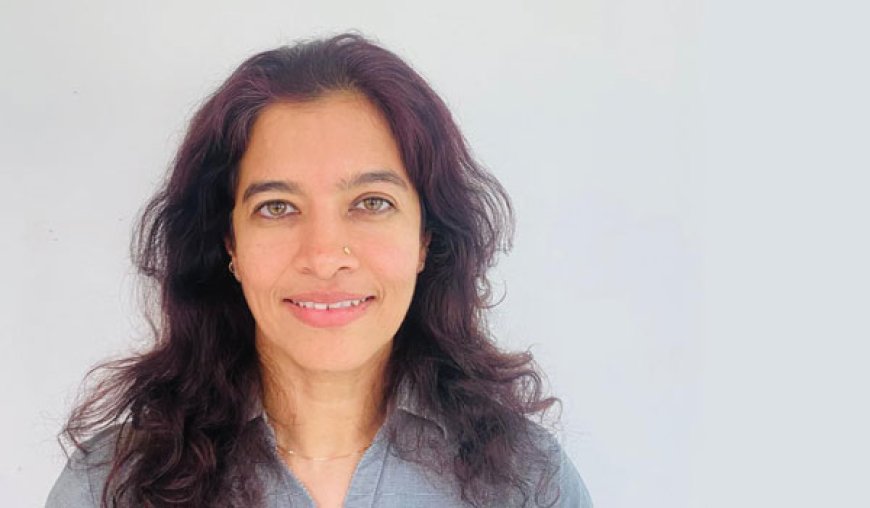 Saraswati Venkataraman, Chief Financial Officer, MANN + HUMMEL INDIA, said, “MANN+HUMMEL’s commitment to empowering women leaders is both holistic and intentional—through structured policies, leadership development programs, and a culture that truly fosters inclusion. It is encouraging to see the company take such proactive steps toward gender equity in leadership—both globally and in India. With my financial and business acumen, I take pride in contributing meaningfully to the organization’s growth and success. I’m honoured to serve on the Board of Directors of MANN+HUMMEL India, representing the active participation and influence of women in strategic decision-making at the highest level. I’ve also had the privilege of serving as Chairperson of the ICC Committee for POSH (Prevention of Sexual Harassment), where I work to promote a safe and respectful workplace culture for all employees—especially women.”
Saraswati Venkataraman, Chief Financial Officer, MANN + HUMMEL INDIA, said, “MANN+HUMMEL’s commitment to empowering women leaders is both holistic and intentional—through structured policies, leadership development programs, and a culture that truly fosters inclusion. It is encouraging to see the company take such proactive steps toward gender equity in leadership—both globally and in India. With my financial and business acumen, I take pride in contributing meaningfully to the organization’s growth and success. I’m honoured to serve on the Board of Directors of MANN+HUMMEL India, representing the active participation and influence of women in strategic decision-making at the highest level. I’ve also had the privilege of serving as Chairperson of the ICC Committee for POSH (Prevention of Sexual Harassment), where I work to promote a safe and respectful workplace culture for all employees—especially women.”
 Sweta Singh, People and Culture Head, Volvo CE India, said, “At Volvo CE, we have identified the need for an improved gender balance within. To address the existing gap, we have set a clear commitment: by 2030, we aim for at least 35% of our overall workforce and 35% of the leadership positions to be held by women. Our goal is to achieve an even stronger gender balance in the long term. We strive to create an environment where everyone can make meaningful contributions. Inclusion is the foundation to build diversity of any sort, and we are embedding this in all our people processes right from recruitment to exit. For me, the most important step has been on building leaders’ ownership and involvement that drives meaningful actions on DEI. We have worked with making leaders as our Co-pilots, giving them autonomy in DEI goal setting, helping them contextualize and find their own unique barriers to success and build plans aligning with the overall company ambitions. We have also created awards to recognize champions, Inclusive Leaders and best initiatives that is helping us build a diverse and inclusive workplace. We see progress by changing the way we work on Diversity and Inclusion.”
Sweta Singh, People and Culture Head, Volvo CE India, said, “At Volvo CE, we have identified the need for an improved gender balance within. To address the existing gap, we have set a clear commitment: by 2030, we aim for at least 35% of our overall workforce and 35% of the leadership positions to be held by women. Our goal is to achieve an even stronger gender balance in the long term. We strive to create an environment where everyone can make meaningful contributions. Inclusion is the foundation to build diversity of any sort, and we are embedding this in all our people processes right from recruitment to exit. For me, the most important step has been on building leaders’ ownership and involvement that drives meaningful actions on DEI. We have worked with making leaders as our Co-pilots, giving them autonomy in DEI goal setting, helping them contextualize and find their own unique barriers to success and build plans aligning with the overall company ambitions. We have also created awards to recognize champions, Inclusive Leaders and best initiatives that is helping us build a diverse and inclusive workplace. We see progress by changing the way we work on Diversity and Inclusion.”
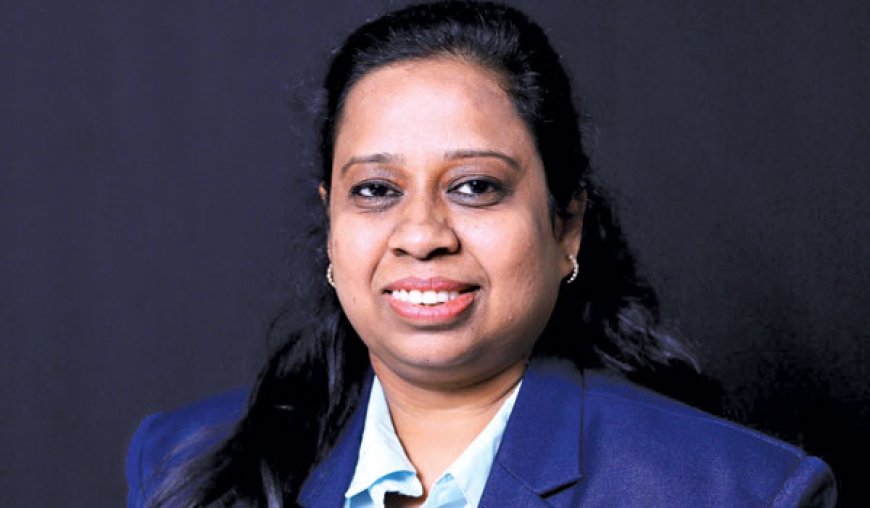 Chhavi Aggarwal, Group CFO, Mtandt Group, said, “The role of women is undergoing a profound transformation. We’re moving beyond traditional support roles to becoming core innovators, leaders, and decision-makers. Women are now leading complex engineering projects, driving technological innovations, and holding critical leadership positions across design, manufacturing, operations, and strategic management. The industry is gradually recognizing that diversity isn’t just about representation—it’s about bringing diverse perspectives that drive innovation and operational excellence. We have a multi-pronged approach. Our recruitment includes specialized programs for women in engineering and technical fields. For retention, we offer flexible work arrangements, comprehensive leadership development tracks specifically designed for women, and robust return-to-work programs for those who’ve taken career breaks. We’ve also implemented transparent career progression frameworks and regular skill assessment programs to ensure equal growth opportunities.”
Chhavi Aggarwal, Group CFO, Mtandt Group, said, “The role of women is undergoing a profound transformation. We’re moving beyond traditional support roles to becoming core innovators, leaders, and decision-makers. Women are now leading complex engineering projects, driving technological innovations, and holding critical leadership positions across design, manufacturing, operations, and strategic management. The industry is gradually recognizing that diversity isn’t just about representation—it’s about bringing diverse perspectives that drive innovation and operational excellence. We have a multi-pronged approach. Our recruitment includes specialized programs for women in engineering and technical fields. For retention, we offer flexible work arrangements, comprehensive leadership development tracks specifically designed for women, and robust return-to-work programs for those who’ve taken career breaks. We’ve also implemented transparent career progression frameworks and regular skill assessment programs to ensure equal growth opportunities.”
 Shamita Nandi, Chief Human Resource Officer, TIL, said, “The role of women in the construction equipment industry is evolving significantly as organisations recognise the value of a diverse workforce. While currently women make up only about 20% of the manufacturing workforce in India, we’re witnessing a positive shift. As the sector expands and the demand for skilled workers grows, women are increasingly taking on roles traditionally considered male-dominated, including positions on factory floors and as service engineers. At TIL Limited, we’re seeing women entering the workforce and taking leadership positions that influence company direction and policy. This evolution is driven by changing industry perspectives recognising diversity as a catalyst for innovation and productivity. Research shows that diverse teams drive better business outcomes, increase innovation, and adapt more quickly to new technologies – all critical factors in the era of Industry 4.0. As manufacturing becomes more technology-driven with the integration of robotics and digital systems, the physical barriers that may have limited women’s participation are diminishing, creating new opportunities across all operational areas.”
Shamita Nandi, Chief Human Resource Officer, TIL, said, “The role of women in the construction equipment industry is evolving significantly as organisations recognise the value of a diverse workforce. While currently women make up only about 20% of the manufacturing workforce in India, we’re witnessing a positive shift. As the sector expands and the demand for skilled workers grows, women are increasingly taking on roles traditionally considered male-dominated, including positions on factory floors and as service engineers. At TIL Limited, we’re seeing women entering the workforce and taking leadership positions that influence company direction and policy. This evolution is driven by changing industry perspectives recognising diversity as a catalyst for innovation and productivity. Research shows that diverse teams drive better business outcomes, increase innovation, and adapt more quickly to new technologies – all critical factors in the era of Industry 4.0. As manufacturing becomes more technology-driven with the integration of robotics and digital systems, the physical barriers that may have limited women’s participation are diminishing, creating new opportunities across all operational areas.”
 Marion Bouillin, Senior Product Marketing Manager, Bentley Systems, said, “Women in construction are no longer just breaking through the industry — we have become essential voices. As construction advancements continue to shape and redefine the industry, new perspectives are driving innovation in ways traditional ones couldn’t. It’s been incredible to see firsthand how women’s roles in construction are expanding – whether it be on the job site, in skilled trades, or in leadership roles. I believe women across the world are breaking the barriers of what were previously considered “traditional male roles.” In doing so, they are playing a vital role in transforming perceptions about women being viewed as essential contributors who are vital to the construction industry’s future sustainability and success.”
Marion Bouillin, Senior Product Marketing Manager, Bentley Systems, said, “Women in construction are no longer just breaking through the industry — we have become essential voices. As construction advancements continue to shape and redefine the industry, new perspectives are driving innovation in ways traditional ones couldn’t. It’s been incredible to see firsthand how women’s roles in construction are expanding – whether it be on the job site, in skilled trades, or in leadership roles. I believe women across the world are breaking the barriers of what were previously considered “traditional male roles.” In doing so, they are playing a vital role in transforming perceptions about women being viewed as essential contributors who are vital to the construction industry’s future sustainability and success.”
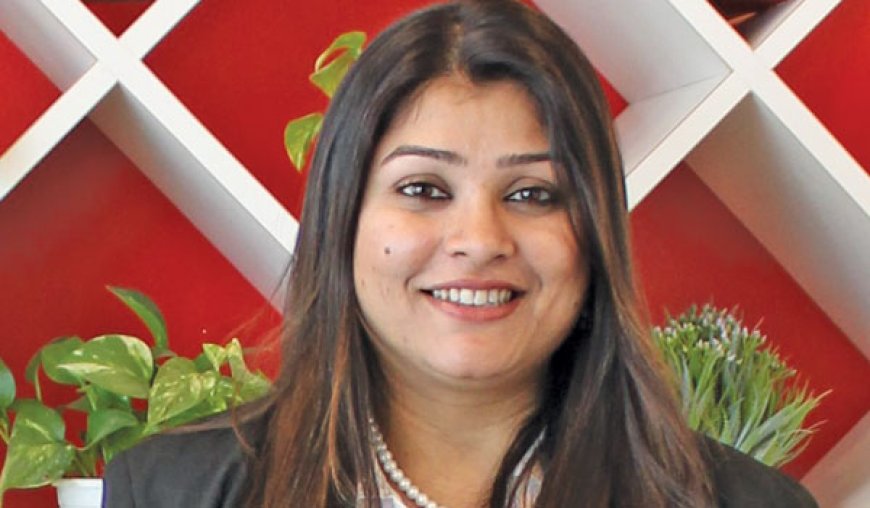 Niti Anand, HR Manager, Dynapac Road Construction Equipment, said, “In the traditionally male-dominated world of heavy engineering, Dynapac is charting a bold new course. Our commitment to gender equality is more than just a corporate mandate—it’s a transformative journey of breaking down barriers and creating genuine opportunities for all. Our diversity and inclusion (D&I) journey took a significant leap forward through our participation in the Kraftsamla program with the Swedish Chamber of Commerce. Promoting gender equality is an ongoing journey. At Dynapac, we view this as more than a corporate initiative—it’s about creating an environment where every individual can thrive, innovate, and reach their full potential. Our vision is simple yet powerful: to build an organization where diversity is not just welcomed, but celebrated.”
Niti Anand, HR Manager, Dynapac Road Construction Equipment, said, “In the traditionally male-dominated world of heavy engineering, Dynapac is charting a bold new course. Our commitment to gender equality is more than just a corporate mandate—it’s a transformative journey of breaking down barriers and creating genuine opportunities for all. Our diversity and inclusion (D&I) journey took a significant leap forward through our participation in the Kraftsamla program with the Swedish Chamber of Commerce. Promoting gender equality is an ongoing journey. At Dynapac, we view this as more than a corporate initiative—it’s about creating an environment where every individual can thrive, innovate, and reach their full potential. Our vision is simple yet powerful: to build an organization where diversity is not just welcomed, but celebrated.”
 Smarak Swayam Jyoti, HR Head – TKIL Industries, said, “The role of women in the construction equipment industry is evolving significantly, driven by increasing inclusivity, technological advancements, and changing workplace cultures. Traditionally a male-dominated sector, the industry is now witnessing more women taking on roles in engineering, operations, leadership, and even on-site machinery handling. As an organization, we have always been focusing on creating an environment which is inclusive, free from bias, provides safe working culture that is harassment free and ethical. This comes with a strong focus and commitment by the leadership team and continuous awareness efforts to all our employees. We also strive to improve gender neutral policies, giving equal opportunity for everyone to thrive.”
Smarak Swayam Jyoti, HR Head – TKIL Industries, said, “The role of women in the construction equipment industry is evolving significantly, driven by increasing inclusivity, technological advancements, and changing workplace cultures. Traditionally a male-dominated sector, the industry is now witnessing more women taking on roles in engineering, operations, leadership, and even on-site machinery handling. As an organization, we have always been focusing on creating an environment which is inclusive, free from bias, provides safe working culture that is harassment free and ethical. This comes with a strong focus and commitment by the leadership team and continuous awareness efforts to all our employees. We also strive to improve gender neutral policies, giving equal opportunity for everyone to thrive.”
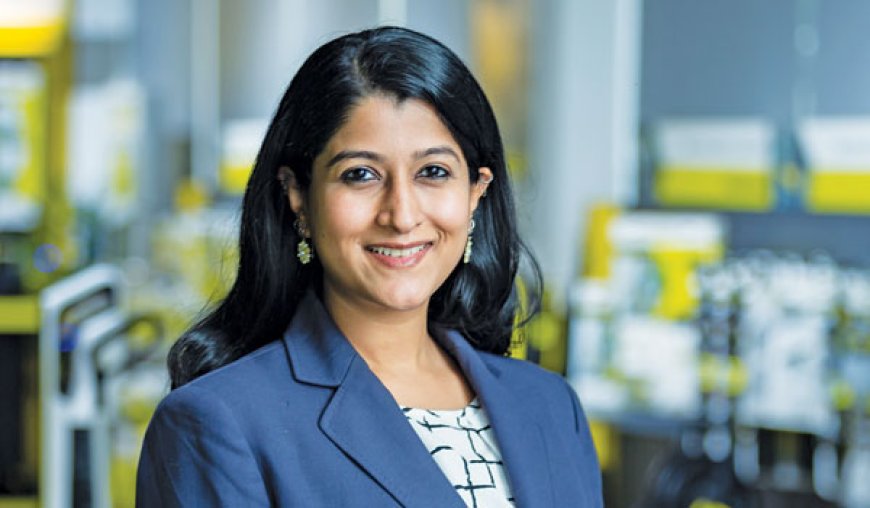 Ayesha Prasad Narain, AGM, Marketing, Karcher India, said, “At Kärcher, challenging stereotypes are embedded in both product design and opportunity creation. At Kärcher, challenging stereotypes starts with an employee-centric approach that prioritizes hiring more women across all levels, from product development to sales and leadership roles. The company actively recruits diverse talent, fostering an inclusive workforce where women are driving innovation and growth, inspired by the rise of women leaders across industries. Our machines too—like our lightweight scrubber driers and easy-to-maneuver vacuum cleaners—are built with inclusivity in mind-crafted primarily for their performance, not physical strength. Kärcher is breaking barriers and proving that capability defines success.”
Ayesha Prasad Narain, AGM, Marketing, Karcher India, said, “At Kärcher, challenging stereotypes are embedded in both product design and opportunity creation. At Kärcher, challenging stereotypes starts with an employee-centric approach that prioritizes hiring more women across all levels, from product development to sales and leadership roles. The company actively recruits diverse talent, fostering an inclusive workforce where women are driving innovation and growth, inspired by the rise of women leaders across industries. Our machines too—like our lightweight scrubber driers and easy-to-maneuver vacuum cleaners—are built with inclusivity in mind-crafted primarily for their performance, not physical strength. Kärcher is breaking barriers and proving that capability defines success.”








